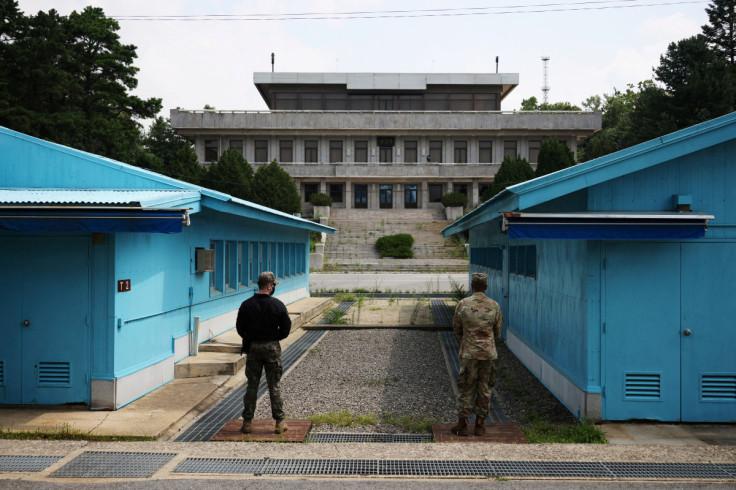Harris To Be Latest Dignitary To Make 'Bucket List' Visit To North Korea Border

When U.S. Vice President Kamala Harris makes an expected visit to the Demilitarized Zone (DMZ) separating the two Koreas on Thursday, she will be the latest in a long list of dignitaries - and tourists - coming to gaze into secretive North Korea.
The DMZ is a relic of the 1950-1953 Korean War, which ended in an armistice rather than a peace treaty, and despite its name, is highly fortified from coast to coast with razor wire, heavy armaments and tank traps on either side of a 2 km-wide buffer.
It's a symbol of a divided peninsula, separated families, geopolitical tension, and bloody military clashes. The area has also become a surreal tourist destination, with outlet malls, theme parks, hiking trails, and other attractions, at least on the South Korean side.
U.S. presidents and numerous top officials have visited the zone, often wearing military-style jackets and usually arriving with messages of support for the alliance that keeps nearly 30,000 American troops in South Korea.
"It's symbolic in that these guys want to show that they are interested in the DMZ and the security of the peninsula, and it's a bucket list item as well," Steve Tharp, a retired U.S. Army officer who spent years facilitating DMZ visits by everyone from politicians and generals to the American comedian Conan O'Brien, who filmed a skit on the North Korean side of the border.
Ronald Reagan was the first U.S. president to visit the DMZ, but Bill Clinton and Donald Trump are the only sitting presidents to have visited the Joint Security Area (JSA), a cluster of buildings that hosts talks, and the only spot where troops from both sides stand face to face, he said.
When Clinton visited in 1993, he walked to the Bridge of No Return, which spans the Military Demarcation Line (MDL) that forms the border, and got its name when prisoners of war marched across it.
Clinton - who once called the DMZ "the scariest place on Earth" - reportedly kept asking whether he'd gone further than any other president, Tharp said.
He had. At least until Trump became the first U.S. president to step briefly into North Korea, when he met leader Kim Jong Un on the border in 2019 for hastily arranged talks that ultimately failed to breath life into stalled denuclearisation talks.
"He tweeted from Japan on a Saturday about 8 a.m. and he arrived 24 hours later and was in the DMZ by 1:30 p.m. and walked across the MDL to meet Kim Jong Un," a former senior U.S. defence official said.
"That was sporty, but we had a great team and it went off without a hitch."
'CLEAR MESSAGE'
George W. Bush had been scheduled to visit on his first trip to South Korea as president in late 2001, but the Sept. 11 attacks derailed the plan and when he finally visited the next year, it was to an observation post set back from the border and protected with a bulletproof glass shield, Tharp said.
Harris will be the first senior official from President Joe Biden's administration to visit the DMZ, and U.S. and South Korean officials said the trip is aimed at underscoring the alliance between Seoul and Washington in the face of any threats posed by North Korea.
"It sends a clear message of support for the alliance from the White House," the former senior official said.
Biden visited the DMZ before he became president but decided not to go during his first trip to South Korea as president this year.
During the last round of heightened tensions in 2017, then-U.S. Vice President Mike Pence visited the DMZ, calling it the "frontier of freedom" and later saying he visited because he wanted the North Koreans to "see our resolve in my face".
North Korea has isolated itself more than ever since the COVID-19 pandemic began and its border guards at the DMZ rarely venture out, often donning protective suits when they do.
Weeds have overgrown the North Korean side of the line between the two Koreas where Trump and Kim stood shaking hands in 2019.
© Copyright Thomson Reuters 2024. All rights reserved.





















